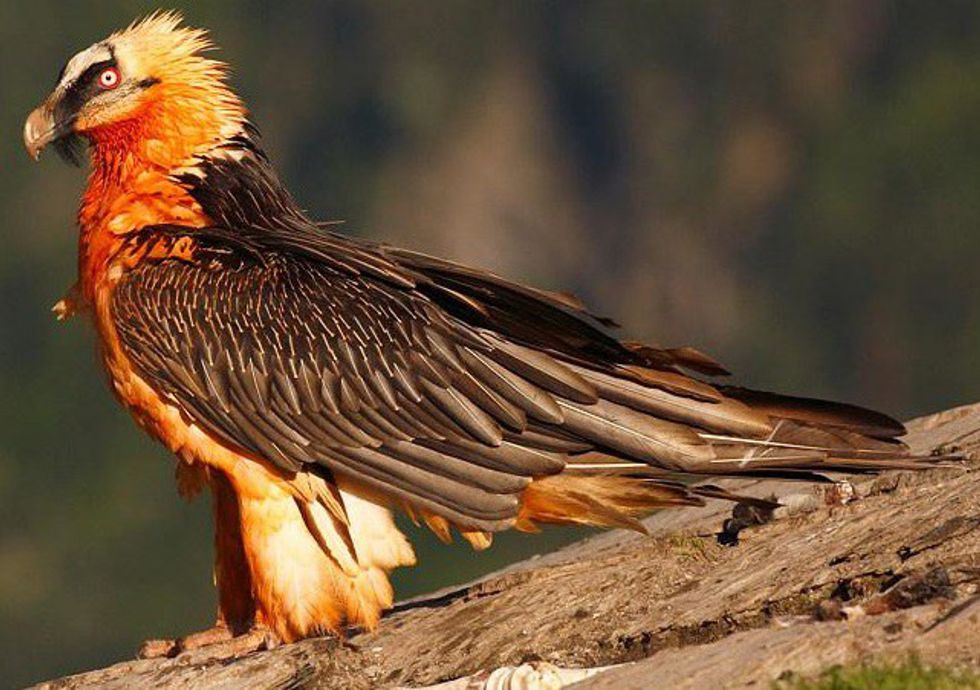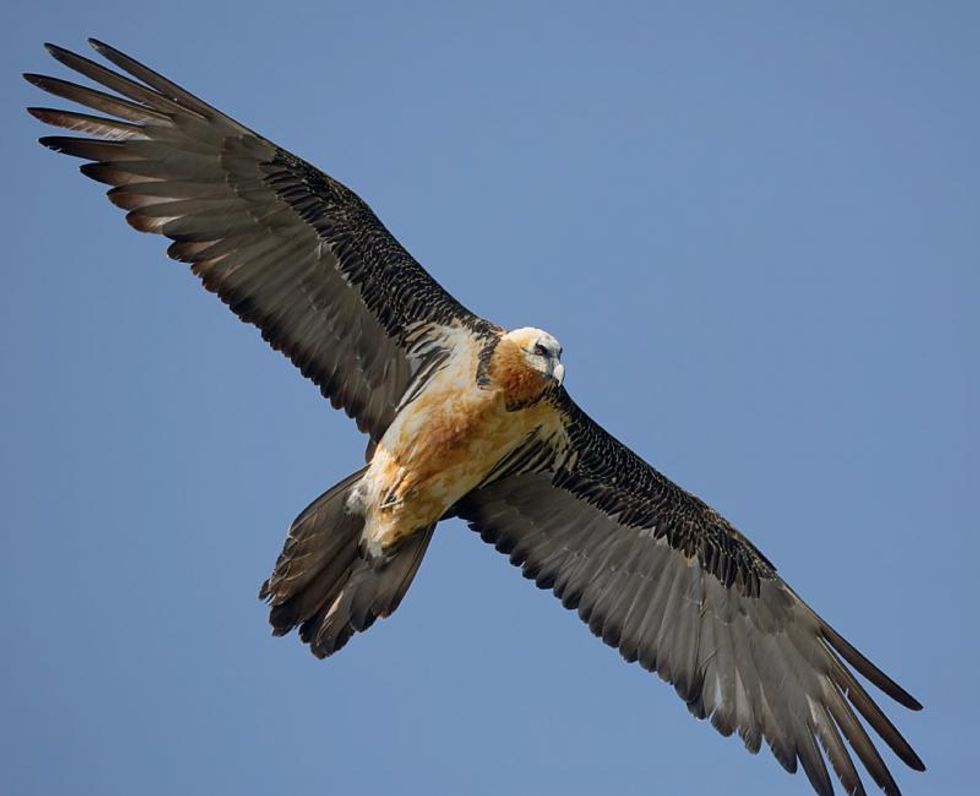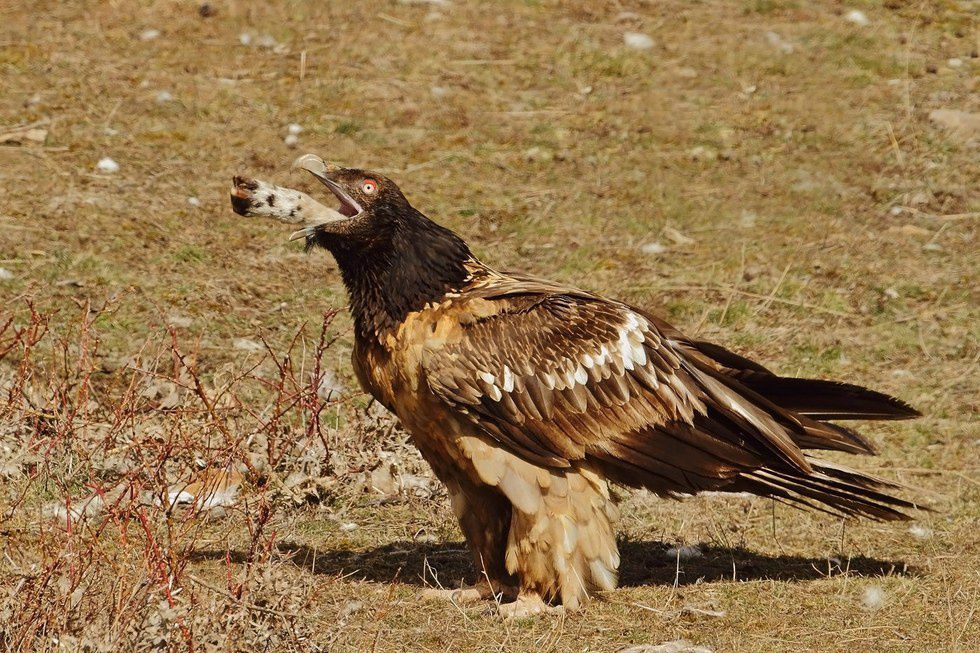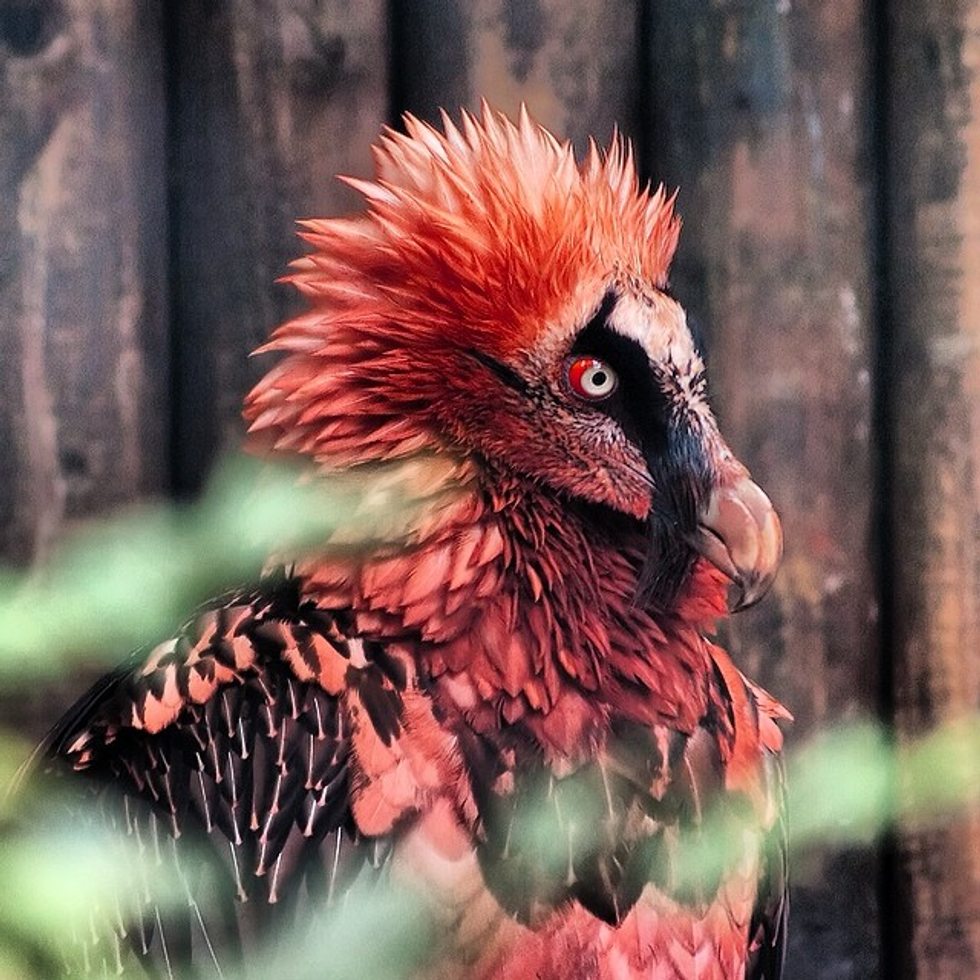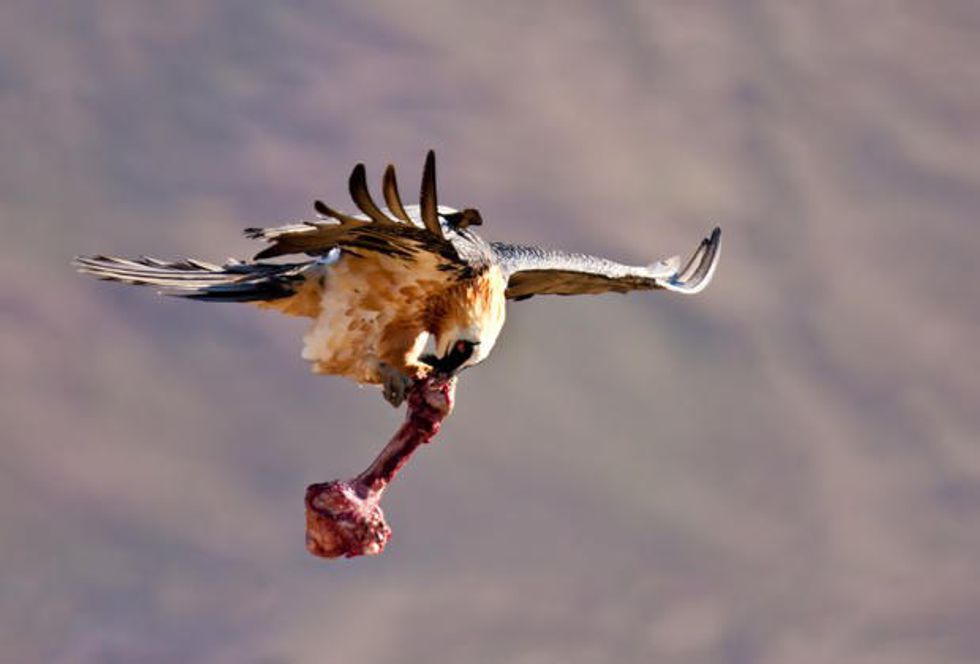This week’s “Species Spotlight!” will cover the rare European raptor known as the bearded vulture!
Image source: www.sourcehorsemen.com
The bearded vulture, Gypaetus barbatus, also known as lammergeier or lammergeyer, resides in mountain ranges in Africa, Asia, and southern European countries such as France, Switzerland, Austria, Germany, Italy, and Slovenia and within the Alps, according to World Wildlife Fund (WWF). The colors of their feathers can vary, from white to beige/a dirty yellow, with grayish black wing and tail feathers. They have a black strip traveling from their intense red and gold eyes down to their beak, ending in a tuft of hair below their beak that gives them their name. The vultures have a wingspan of about 2.7m (8.9ft).
Image source: www.simplysavoie.com
These vultures are very territorial, and once a mated pair claims a region of land as their own, they will not tolerate any intruders. Their territories are very large. According to WWF, their territory range can extend from 200 km2 to 400 km2, which is why the raptor is so rarely seen.
These raptors are monogamous, meaning they have only one mate at a time. According to WWF, mating season is between November and December, and egg-laying season is between December and February. They only lay two eggs at a time, but one egg is smaller than the other, and the hatchling is often killed by its bigger sibling. This is known as biological insurance, where the bigger, more fit offspring has a shot at surviving and reproducing, much like shark pups killing the weaker siblings for nutrition in the mother’s womb.
The bearded vulture is the only animal species that feeds primarily on bone. Unlike other scavengers that go directly for leftover meat on a carcass, the bearded vulture will go right for the bones. When it finds a promising bone, the raptor picks it up and soars high above the mountain cliffs. It then drops the bone on the jagged cliffs in an attempt to crack it into smaller pieces and expose the bone marrow inside. Sometimes multiple attempts are made until the bone splits. When it does, the vulture will eat the marrow and swallow pieces of the bone whole. Their gastric fluids are very strong, making them capable of digesting bone with relative ease. Food is not as hard to come by for the bearded vulture, as they have no competition for this food source. However, they will still chase away any other scavenger that may be on a carcass they wish to forage from.
A juvenile bearded vulture swallowing an ungulate leg whole.
Image source: imgur.com/gallery/fTWp1
Sometimes, bearded vultures will be seen with their feathers shaded a brilliant rusty red color. This is from them bathing in soil or water that contains red iron oxide deposits, according to Earth Touch News. It is still unclear why these raptors do this, but two hypotheses have been thought up. One hypothesis is that it’s a display of dominance. It takes extra energy to locate an iron oxide deposit and then cover oneself with the material, so for an individual to be able to do this is a show of that individual’s strength and endurance. Going along with this, it can be used as a threat toward another vulture, showing off the brilliant red hue as the individual puffs up its feathers toward its opponent. Female bearded vultures are larger than males and are often the more dominant ones during mating season, and have been seen sporting brighter red hues. According to Earth Touch News, within males, paler suitors mate less often than vibrant suitors.
The other hypothesis is that the iron oxide is used as a deterrent toward bacteria. Because bearded vultures are scavengers, they come into contact with many strains of bacteria in the carrion, and the iron oxide protects them and their offspring from the bacteria. According to Earth Touch News, bearded vultures do not produce carotenoids like other animal species. Carotenoids are antioxidant compounds that protect cells from unknown pathogens/bacteria within the body. Most animals obtain carotenoids through their diet, but because bearded vultures only feast on bone and bone marrow, they are unable to obtain carotenoids. This hypothesis also explains why females have a brighter hue than males, because they hold a greater need to protect their offspring, and so they carry more of the antioxidants. Scientists have not been able to agree on one hypothesis or another, or if there’s another reason for this behavior, so the reason why the raptors coat themselves in iron oxide remains a mystery.
Image source: ww.itimes.com
The bearded vulture’s conservation status is least concern, according to WWF. Historically they were seen as dangerous and were said to have carried away livestock and even children. They were hunted and eventually eradicated from the Alps. Through conservation efforts, they were reintroduced back into the Alps. WWF states that threats they face today are lack of food from habitat destruction/degradation, illegal poison baits used for “vermin” animals, habitat loss, and illegal persecution. The bearded vulture may be of least concern conservation wise, but it is still important to keep them in mind so they don’t potentially get classified as endangered.Image source: mentalfloss.com




